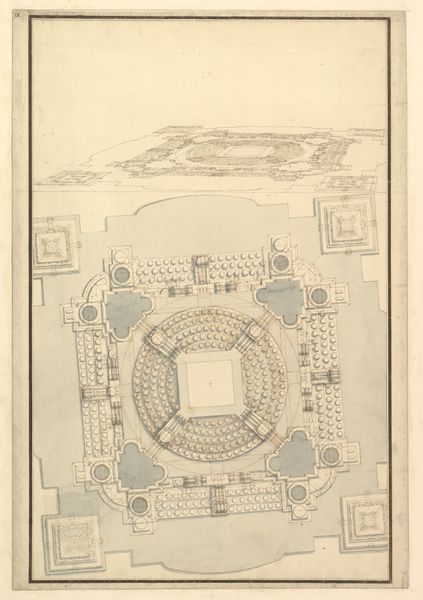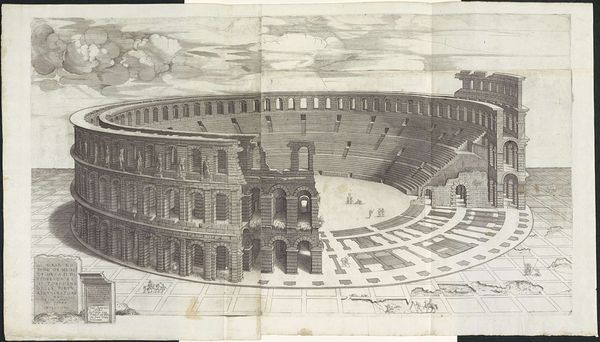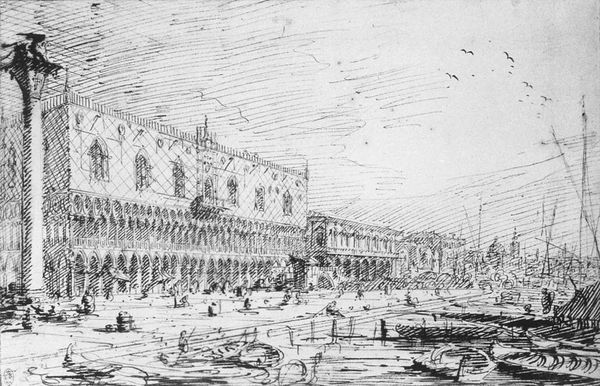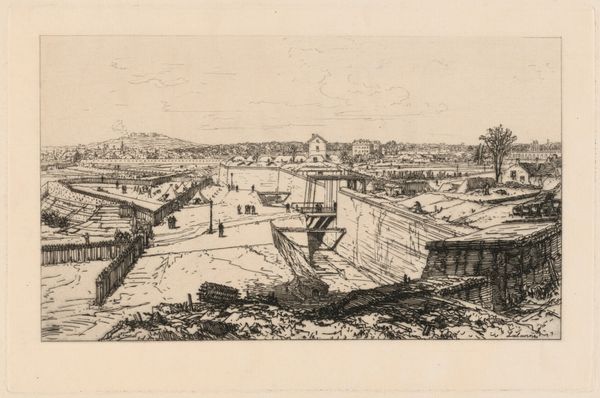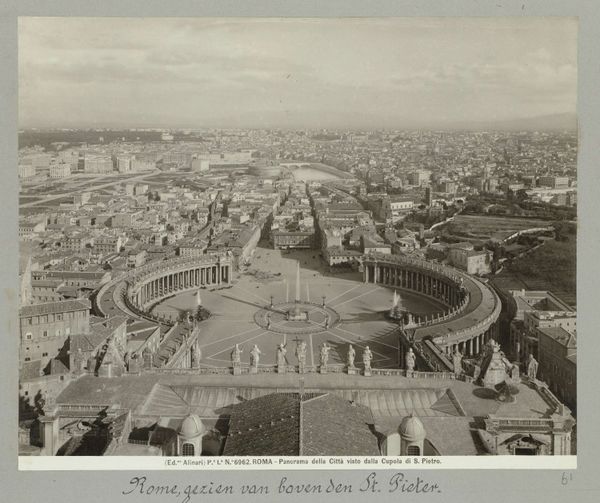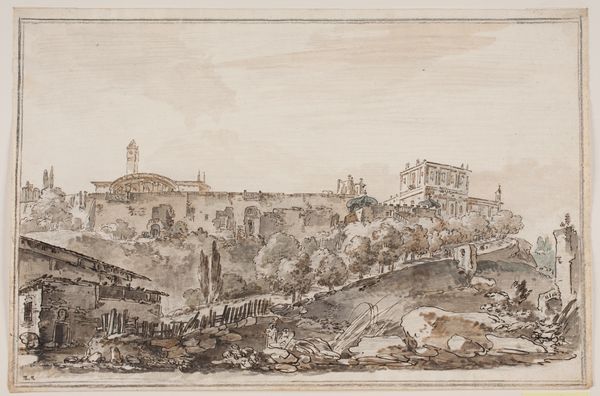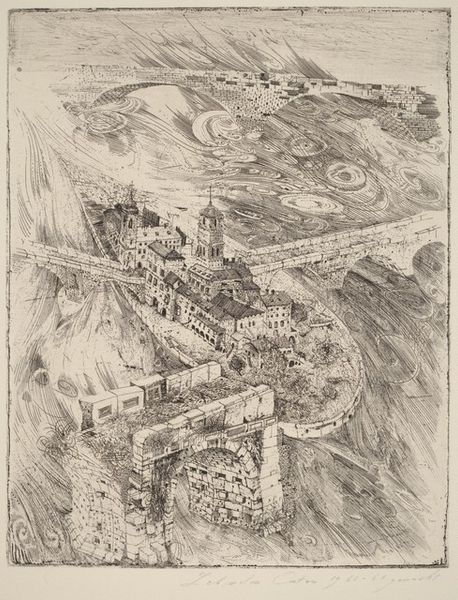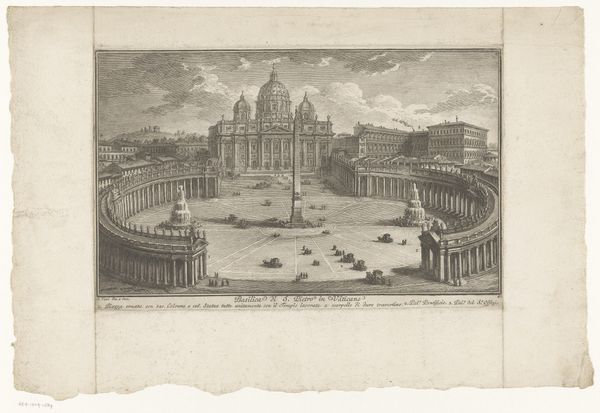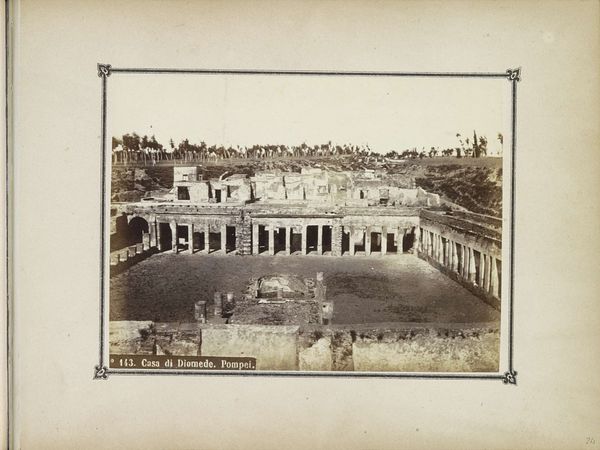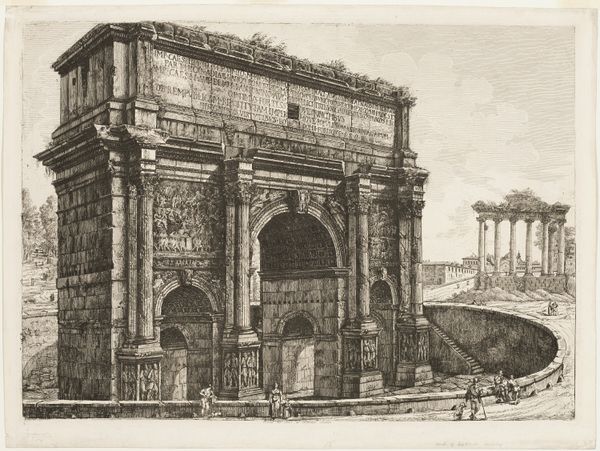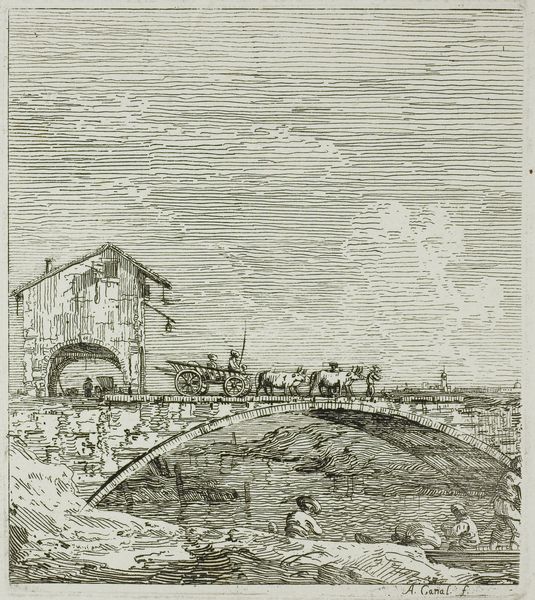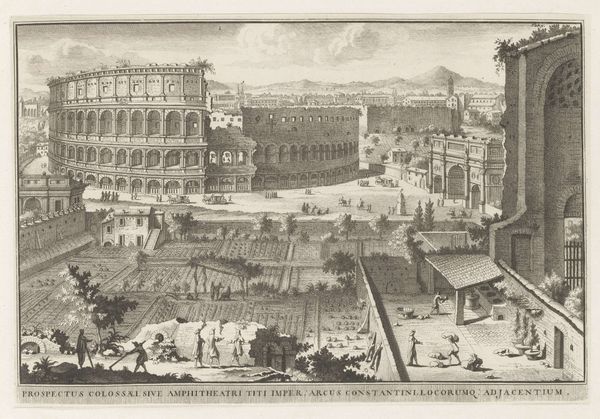
Dimensions: support: 648 x 777 mm frame: 559 x 697 x 34 mm
Copyright: © Desmond Banks | CC-BY-NC-ND 4.0 DEED, Photo: Tate
Editor: Here we have Sir William Nicholson’s "Plaza de Toros, Malaga," currently residing in the Tate Collection. I’m struck by the composition; the bullring dominates the canvas, and it makes me wonder, what was Nicholson trying to say about spectacle and society here? Curator: It’s fascinating to consider Nicholson's portrayal of this space. The bullring wasn't just a place of entertainment. It was a highly symbolic arena reflecting social hierarchy, national identity, and even ideas around masculinity and bravery. How do you think Nicholson positions the viewer in relation to this spectacle? Editor: It feels detached, almost like observing from a distance, lending a critical eye to the event. Curator: Precisely. Nicholson captures the plaza, perhaps inviting reflection on the cultural and political implications embedded within this seemingly simple scene of leisure. It makes you wonder how British audiences might have viewed the painting at the time. Editor: I see that now; it's more than just a snapshot, it's a social commentary. Curator: Exactly!
Comments
tate 8 months ago
⋮
http://www.tate.org.uk/art/artworks/nicholson-plaza-de-toros-malaga-t05520
Join the conversation
Join millions of artists and users on Artera today and experience the ultimate creative platform.
tate 8 months ago
⋮
This view was painted in London from a smaller oil sketch made on the spot in Spain. Nicholson stayed with friends in Malaga for four weeks over May and June 1935. He had a studio there, where he painted most of the landscapes and still lifes that he exhibited at the Leicester Galleries in London in the following year. Nicholson noticed this view on a walk into the town of Malaga, and instantly recorded it with a drawing in a sketchbook.While in Spain he became interested in bullfights, and went to one in Segovia. It is also evident that he liked elliptical shapes in the centre of his design, like the bullring here, and like the objects in some of the still lifes. Gallery label, September 2004
